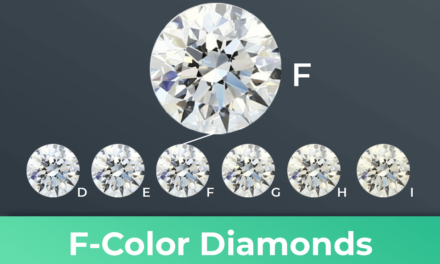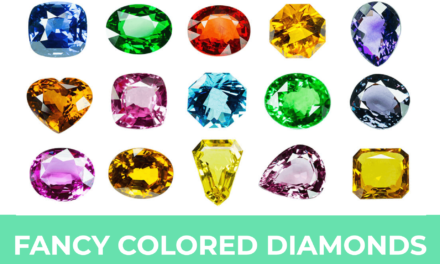My website is reader-supported. Buying through links on my site may result in me earning a CUSTOMER REFERRAL FEE at no extra cost to you.
Check out the latest deals at our top diamond vendor choice: James Allen
All You Need to Know About Lab Created Diamonds
 Are you in the market for an engagement ring? If so, you’ve probably heard of lab-created diamonds. But what are lab-created diamonds? And are they worth considering over traditional diamonds?
Are you in the market for an engagement ring? If so, you’ve probably heard of lab-created diamonds. But what are lab-created diamonds? And are they worth considering over traditional diamonds?
In this post, we’ll take a closer look at lab-created diamonds and explore some of the pros and cons of buying them. By the end, you’ll be able to make an informed decision about whether or not lab-created diamonds are suitable for you.
Content overview
- What are lab grown diamonds?
- The difference between lab grown diamonds and other diamond simulants
- Differences between a lab diamond and an earth mined diamond
- How much do lab grown diamonds cost?
- Advantages of a lab crated diamond
- Are lab grown diamonds real or fake?
- Does GIA grade lab grown diamonds?
- Do lab-created diamonds last as long as naturally formed diamonds?
- Do lab grown diamonds have inclusions?
- Where to buy a lab created diamond?
- Conclusion
Lab-Created Diamonds Summary
- Lab-created diamonds have the same chemical properties as natural diamonds and look identical.
- One massive advantage of lab diamonds is that they are 20-70% cheaper than natural diamonds.
- In addition to that, they are always conflict-free.
- While quickly rising in popularity for engagement rings, lab diamonds still represent a minor portion of overall diamond sales.
- The best place to shop for lab-grown diamonds is James Allen.
What are lab grown diamonds?
A lab-grown diamond is a real diamond that has been manufactured in a lab under highly controlled conditions with the help of diamond seeds.
Diamonds are grown by diamond growers using advanced technology processes (including machinery such as a chemical vapor deposition cvd), including high-pressure, high temperature (HPHT), to duplicate how diamonds naturally develop under the earth’s crust. Like “real” diamonds, these lab-created diamonds consist of pure carbon atoms.
Take a look at the video from DW below to see the exact process:
The great thing about lab diamonds is that they look exactly like a natural diamond. That’s because they have the same physical and chemical properties as earth mined diamonds.
You can only distinguish lab diamonds from natural diamonds with special equipment designed to detect tiny variations in trace elements and how the crystal formed.
Lab-created or cultured diamonds can even be certified by the major gem labs such as GIA (Gemological Institute of America), EGL (European Gemological Laboratories), or IGI (International Gemological Institute). This lab certification is the key to lab-created diamonds achieving the status of “real diamonds.”
While quickly rising in popularity, they still represent only a tiny portion of overall diamond sales.
Lab-Created Diamonds vs Diamond Simulants like Cubic Zirconia
You need to know that there is a vast difference between lab-grown and simulated diamonds, like cubic zirconia, a white sapphire, or moissanite. Diamond simulants may look very similar to real diamonds, but they consist of carbon crystals.
Simulated diamonds lack the chemical makeup and properties of naturally formed diamonds. That’s why they cost less than lab-grown or earth-mined diamonds. You can see the difference between them by looking at them with the naked eye.
Just take a look at the picture below, and you’ll see what I’m talking about:

To read more about the various diamond simulants on the market and whether they are any good, you can check out my blog post here.
Lab-Created Diamonds vs. Natural Diamonds
First of all, naturally mined diamonds and lab-created diamonds are optically identical.
Diamonds that grow in a lab have the same physical appearance and properties as naturally formed diamonds. So there is no easy way to tell the difference between a lab-grown diamond and an authentic diamond. Especially not without the proper equipment. Even a trained gemologist cannot tell the difference.
Just take a look at the two diamonds below and judge for yourself:
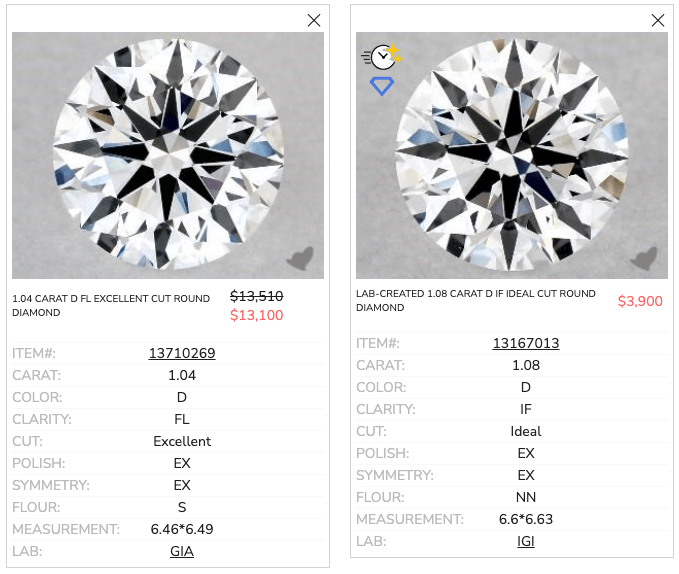
The main difference, of course, is in how they are each formed. Synthetic diamonds grow in just a few weeks. But it takes billions of years to form a natural diamond beneath the earth’s crust.
Another factor is cost. Lab-created diamonds often only cost half the price of comparable earth mined diamonds (more about that in a later section).
But generally speaking, when you compare a lab-grown diamond side-by-side with an authentic diamond, you really can’t see any difference. The only way to tell is by looking at a reputable grading report such as from GIA or IGI.
A mined diamond represents one of nature’s mysterious miracles for some people. Others may prefer a lab diamond as the product of highly advanced technology. But if you’re trying to determine which one is better, it is a matter of opinion.
How much do diamonds created in a lab cost?
High-quality, lab-grown diamonds are less expensive than mined diamonds, making them increasingly popular for those shopping for an engagement ring.
On average, lab-grown diamonds are 20%-70% cheaper than mined diamonds.
Below, I put together a chart of comparable mined diamonds vs. lab diamonds. As you can see, the price difference is huge:
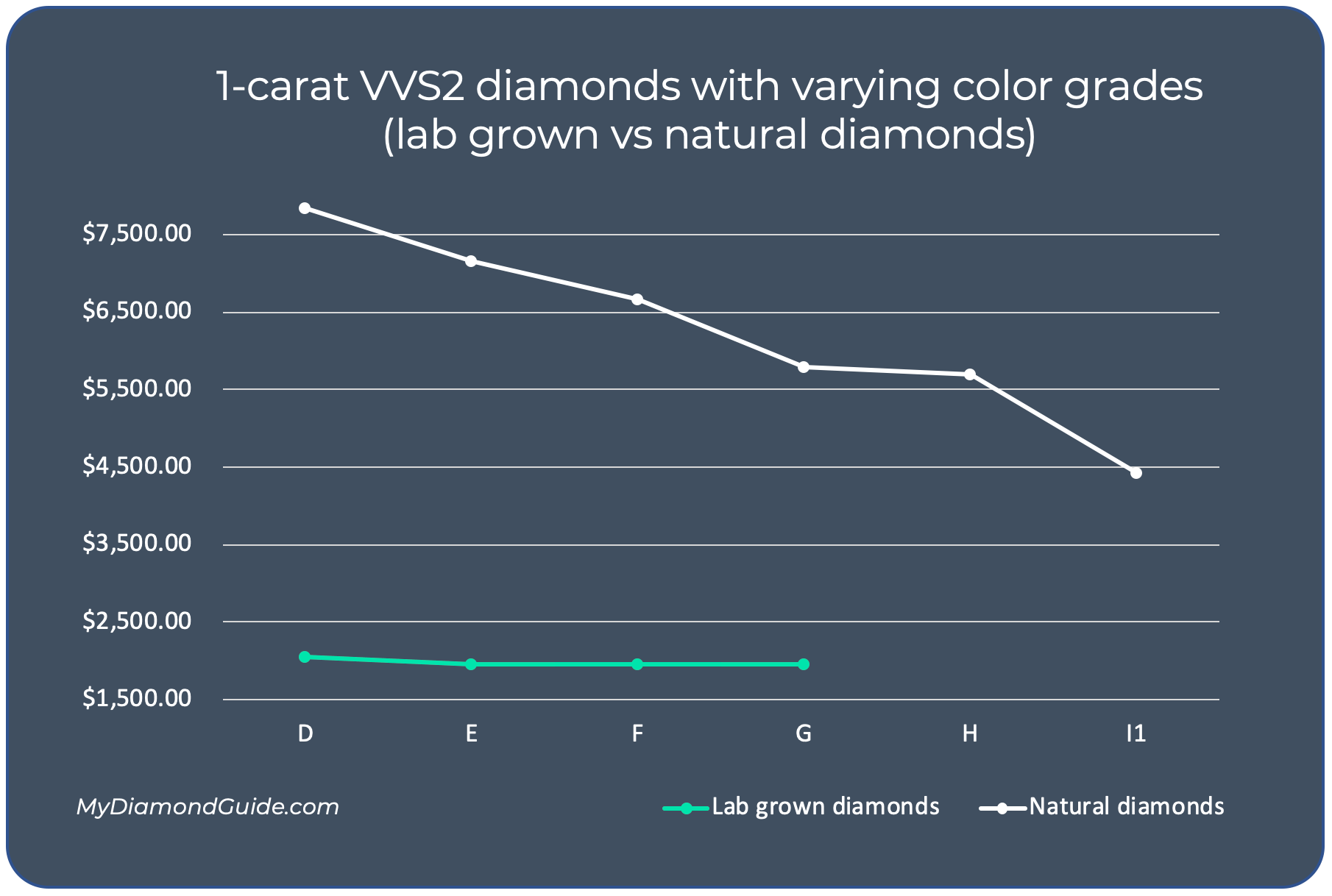
Moreover, you can see that while the price for natural diamonds continuously declines, the same is not true for lab diamonds.
But don’t forget that the 4 Cs still apply when it comes to price: cut, clarity, color, and carat weight. You have far more flexibility with the 4 Cs and should get a higher quality stone for your money.
There would be fewer and more minor inclusions in a lab-grown diamond than you would get for the same amount of money if you were buying a naturally formed diamond. For example, a 1-carat round diamond, excellent cut, VS2 clarity, and G color will cost less than a lesser quality 1-carat round diamond, ideal cut, SI1 clarity with H color from an online diamond retailer of naturally formed stones.
Advantages of Lab Grown Diamonds
Environmentally Friendly
Creating diamonds in a lab is far gentler on Mother Earth than mining diamonds. For example, for every single carat of diamond weight pulled from the earth, just under 100 sq. ft. of land is dug up, creating nearly 6,000 lbs. of mineral and other waste.
Ethically & Safely Sourced
Moreover, one injury occurs each year for every 1,000 workers in the diamond mining industry, whereas zero injuries are associated with lab-created diamonds.
Less Expensive
Lab-grown diamonds have a shorter supply chain; they cost 20% – 70% less than naturally formed mined diamonds.
Conflict free
Many diamond mines worldwide are involved in severe human rights and social issues. People are now more aware of this than before and only look for conflict-free diamonds. Fortunately, several diamond vendors proudly sell ethically sourced, conflict-free loose diamonds, engagement rings, and other jewelry. James Allen, for example, has many beautiful conflict-free diamonds to choose from.
Every diamond that James Allen sells complies with the Kimberly Process and is conflict-free certified.
Are lab-grown diamonds considered fake or are they real?
Even though they’ve been scientifically grown in a lab rather than forming naturally in the earth, lab-grown diamonds are real.
That’s because lab-grown diamonds are identical to naturally formed diamonds in their chemical and physical makeup.
Does the GIA grade Lab-Grown Diamonds?
Yes. The GIA has been grading them since 2007 and issuing GIA laboratory-grown Diamond Reports. The GIA laboratory-grown Diamond Reports have the standard GIA cut, clarity, and color grades for reference purposes, using descriptive terms for clarity and color. As of July 1, 2019, the GIA stopped using the term “synthetic” in describing these diamonds.
They also state, “This is a man-made diamond produced by CVD (Chemical Vapor Deposition) or HPHT (High-Pressure High Temperature) growth processes and may include post-growth treatments to change the color.”
Do lab-created diamonds last as long as naturally formed diamonds?
We have seen many ad campaigns using the phrase, “A diamond is forever.” This slogan has become famously synonymous with diamonds. But people are now debating the truth of this claim.
As lab-grown diamonds have become more common, some have started worrying that perhaps only natural diamonds that took billions of years to form deep within the earth could live up to this claim. Fortunately, those with lab-grown diamonds can rest easy knowing that your stone will last just as long as any diamond mined from the earth, which is forever.
Do lab-grown diamonds have inclusions?
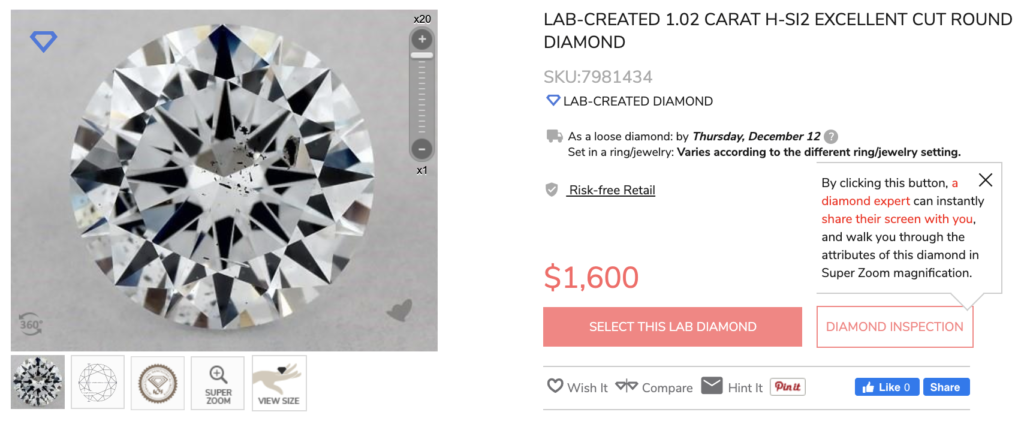
Yes. Inclusions occur in lab-grown diamonds, like in almost all naturally formed diamonds. The same processes that occur when diamonds form in the earth are mimicked in the laboratory to create diamonds. So, inclusions will occur due to extreme pressure, heat, unique growth patterns, etc.
Where to buy lab diamonds?
There are more and more places where you can buy lab diamonds, but one of the most popular places that people like to purchase those gems is James Allen.
James Allen has lab-grown diamonds for sale in their online store, and they have a lab-created diamonds video you can watch, giving you a better understanding of lab-grown diamonds. Besides their vast diamond selection, they also offer beautiful ring settings and colored lab-created diamonds, all of which come with proper diamond certification.
From my personal experience, I bought lab diamond earrings from them. It was pleasant to buy from them as their online store is very user-friendly and has a lot of lab-created diamond options for different types of jewelry. You can compare lab diamonds to mined diamonds on James Allen or watch lab-created diamond videos on their website.
Conclusion: Lab created diamond vs natural diamonds
Lab-created diamonds are a great alternative to natural-grown diamonds. They may be less expensive and look the same, so there’s no noticeable difference in quality or appearance. If you’re shopping for an engagement ring or another piece of jewelry, take a moment to explore their selection! James Allen is one of many retailers that sell lab-created diamonds online.

